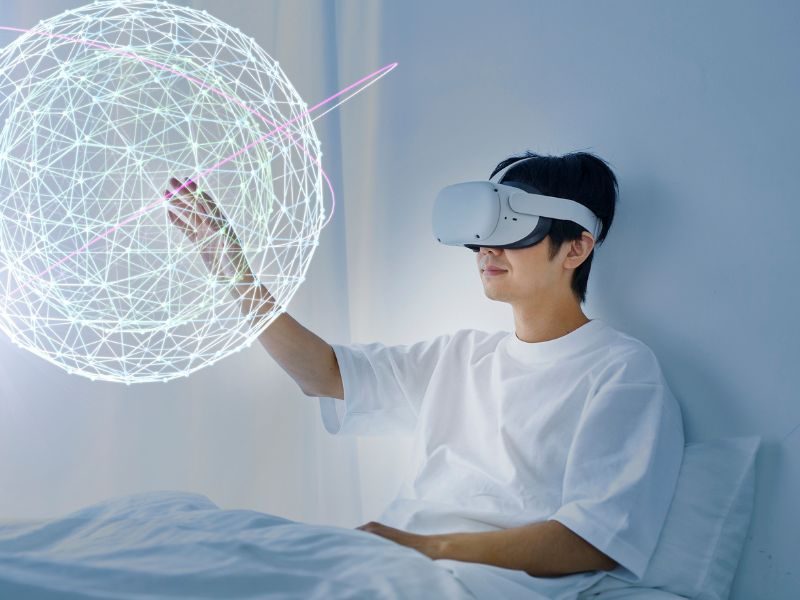Key Takeaways
| Aspect | Key Point |
|---|---|
| Definition | Perception of reality is how we interpret sensory information, forming our subjective experience of the world |
| Key Difference | Perception occurs in the mind while reality exists independently outside our mental processes |
| Influencing Factors | Emotions, past experiences, cultural background, and cognitive biases shape how we perceive reality |
| Common Problem | Most people’s perceptions are flawed due to limited information and unconscious assumptions |
| Personal Impact | Your perception becomes your reality and directly influences your decisions and emotions |
| Changeability | Perception can be altered through awareness, fact-checking, and exposure to different perspectives |
| Communication Effect | Understanding different perceptions improves relationships and reduces misunderstandings |
Perception of Reality
Your brain doesn’t show you the world as it truly is. Instead, it creates a personalized version based on your senses, experiences, and beliefs. This gap between what you perceive and what actually exists shapes every decision you make, every relationship you have, and every emotion you feel. Understanding perception of reality isn’t just philosophical curiosity—it’s practical knowledge that can transform how you navigate life.
Most people assume their perception equals truth. But perception is actually a mental impression created by your brain’s interpretation of sensory data. Reality exists independently, whether you perceive it accurately or not. This distinction matters because when perception and reality don’t align, confusion, conflict, and poor decisions follow. The good news? Once you understand how perception works, you can learn to see more clearly.
What Perception of Reality Actually Means
Perception of reality refers to how your brain interprets and makes sense of information received through your senses, creating your subjective experience of the world around you. It’s not just passive reception of data—it’s an active construction process where your mind organizes sensory information into meaningful patterns and experiences.
Your brain acts like a sophisticated filter system. It takes raw sensory input—light waves, sound vibrations, chemical signals—and transforms them into the coherent experience you call “reality.” But this process isn’t objective. Your brain fills in gaps, makes assumptions, and applies shortcuts based on past learning. What you end up perceiving is a personalized interpretation, not a direct copy of external reality.
Gestalt principles show how this works in practice. Your brain automatically organizes sensory information into meaningful wholes or patterns. When you see a face, you don’t process individual features separately—your brain combines them into a complete image. This organizational process happens so quickly and automatically that you’re rarely aware it’s occurring. But it means your perception is always constructed, never purely factual.
Perceptual constancy demonstrates another aspect of this construction process. You perceive objects as stable despite changes in sensory information. A car looks the same size whether it’s near or far, even though the actual image on your retina changes dramatically. Your brain compensates using learned rules about distance and perspective. These compensations usually work well, but they can also create systematic errors in perception.
The key insight is that perception happens inside your mind, while reality exists outside it. This doesn’t make perception unimportant—your perceived reality determines how you feel and act. But recognizing the difference helps you question your assumptions and seek more accurate information when important decisions are at stake.
How Past Experiences Shape What You See
Your history creates the lens through which you view everything. Past experiences don’t just influence your opinions—they literally change what you perceive in the present moment. Your brain uses stored memories as templates for interpreting new situations, often without your conscious awareness of this process occurring.
When you encounter something new, your brain immediately searches for similar past experiences to help make sense of it. If you had negative experiences with authority figures growing up, you might automatically perceive criticism in a boss’s neutral feedback. If you grew up in a loving family, you might more readily perceive warmth in strangers’ behavior. These aren’t conscious choices—they’re automatic pattern-matching processes.
Emotional memories have particularly strong influence over perception. Events that triggered intense emotions get encoded more vividly and accessed more quickly when similar situations arise. If you were embarrassed by speaking in public once, your brain might perceive threat in future speaking opportunities that others would see as exciting challenges. The emotional charge from the past colors your present perception.
Cultural experiences also create perceptual templates. Growing up in different cultures literally trains your brain to notice different things and interpret them differently. Eye contact, personal space, facial expressions, and vocal tones all get interpreted through cultural lenses learned in childhood. What feels respectful in one culture might feel rude in another—not because the behavior is objectively different, but because the perceptual framework is different.
Confirmation bias makes this process even more powerful. Once your brain develops expectations based on past experience, it tends to notice information that confirms those expectations while filtering out contradictory evidence. If you expect someone to be unfriendly based on past experiences with similar people, you’ll notice their frowns but miss their smiles. This selective attention reinforces existing perceptual patterns, making them stronger over time.
The influence of past experience means that changing perception often requires conscious effort. Simply having new experiences isn’t enough if your brain interprets them through old templates. You need awareness of how your history shapes your perception, plus deliberate practice in considering alternative interpretations of what you observe.
Why Your Perception Can Be Wrong
Human perception is notoriously unreliable, but most people don’t realize how often their perceptions mislead them. Your brain evolved to make quick survival decisions, not to perceive objective truth. This creates systematic biases and errors that affect everyone, regardless of intelligence or education.
Limited processing capacity is one major source of perceptual errors. Your senses collect far more information than your brain can consciously process. To handle this overload, your brain uses shortcuts, fills in missing details, and focuses attention selectively. These efficiency mechanisms work well for basic functioning but create blind spots and distortions in your perception of complex situations.
Optical illusions demonstrate how easily perception can be fooled. The same lines can appear different lengths, the same color can look different shades, and stationary objects can appear to move. These illusions work because they exploit the shortcuts your visual system uses to interpret information. If basic visual perception can be so easily manipulated, imagine how complex social and emotional perceptions can be distorted.
Emotional states heavily influence perception. When you’re anxious, neutral expressions look threatening. When you’re depressed, positive events seem less meaningful. When you’re angry, ambiguous actions seem intentionally hostile. Your current mood acts like a filter that colors everything you perceive, making your emotional state a key factor in the accuracy of your perceptions.
Expectation effects also distort perception. If you expect something to happen, you’re more likely to perceive it even when it doesn’t occur. Sports fans see more fouls against their team than objective observers do. Parents hear their baby crying in background noise where others hear nothing. These aren’t deliberate mistakes—your brain genuinely constructs these perceptions based on your expectations.
Memory errors compound perceptual errors over time. Your brain doesn’t store experiences like a video recording—it reconstructs memories each time you recall them. Details get added, subtracted, or modified based on current knowledge and emotions. What you remember happening may be quite different from what actually occurred, but the reconstructed memory feels completely real.
Understanding these limitations doesn’t mean you should distrust all perceptions, but rather that you should hold them lightly, especially in important situations. Checking facts, seeking multiple perspectives, and questioning your assumptions can help bridge the gap between perception and reality.
The Role of Emotions in Distorting Reality
Emotions act as powerful filters that can dramatically alter what you perceive, often without your awareness. When you’re in an emotional state, your brain prioritizes information that matches or reinforces that emotion while minimizing contradictory evidence. This emotional filtering happens automatically and influences everything from how you interpret facial expressions to how you remember past events.
Fear-based perception is particularly distorting. When you feel threatened, your brain shifts into a hypervigilant mode that makes you more likely to perceive danger everywhere. Neutral expressions seem hostile, innocent comments feel like attacks, and harmless situations appear threatening. This survival mechanism served our ancestors well when facing physical predators, but it creates problems in modern social situations where perceived threats are usually not life-threatening.
Anxiety amplifies this effect by making you focus intensely on potential problems while filtering out positive or neutral information. If you’re anxious about a presentation, you’ll notice every skeptical expression in the audience while missing the nodding heads and engaged faces. Your anxious brain literally constructs a more threatening reality than what objective observers would perceive.
Depression creates opposite but equally distorting effects. Depressed perception tends to filter out positive information while amplifying negative details. Compliments get dismissed as insincere, achievements feel meaningless, and setbacks seem catastrophic. This isn’t “realistic” thinking—it’s systematically biased thinking that creates a darker version of reality than what exists.
Positive emotions also distort perception, though usually in more pleasant ways. When you’re happy or in love, you tend to perceive more positives and fewer negatives in situations and people. This “rose-colored glasses” effect can lead to overlooking real problems or making overly optimistic assumptions, but it generally creates more enjoyable life experiences than negative emotional filters do.
Emotional contagion adds another layer of complexity. You unconsciously mirror the emotions of people around you, which then influences your perception of the situation. Being around anxious people makes you more likely to perceive threats, while being around calm people helps you perceive situations more neutrally. This means your social environment directly affects the reality you construct.
Learning to recognize when emotions are filtering your perception is crucial for making better decisions. This doesn’t mean suppressing emotions—they provide valuable information about your needs and values. But it does mean acknowledging when emotional states might be coloring your perception and seeking additional perspectives before drawing conclusions or taking action.
Cultural and Social Influences on Perception
Culture acts like invisible software programming that shapes how you perceive and interpret reality from birth. Growing up in different cultural environments literally trains your brain to notice different things, interpret behaviors differently, and construct meaning according to learned cultural patterns. These influences run so deep that people from different cultures can witness the same event and perceive completely different realities.
Communication styles vary dramatically across cultures, leading to frequent perceptual misunderstandings. Direct communication cultures teach people to perceive explicit verbal messages as primary, while indirect cultures train people to read context, tone, and unspoken implications. When these styles interact, each side often misperceives the other’s intentions—direct communicators seem rude to indirect cultures, while indirect communicators seem dishonest to direct cultures.
Social hierarchies also shape perception in culture-specific ways. Some cultures train people to immediately notice and respond to status differences, while others emphasize equality and minimize hierarchy awareness. These different perceptual habits create misunderstandings when people from hierarchical and egalitarian cultures interact, each perceiving disrespect where none was intended.
Family systems create micro-cultural influences that shape perception throughout life. Children learn to read emotional atmospheres, interpret conflict styles, and understand relationship dynamics based on their family’s specific patterns. These early perceptual training experiences become templates for interpreting all future relationships, often outside conscious awareness.
Social media and technology are creating new forms of cultural influence on perception. Algorithm-driven feeds create personalized information bubbles that reinforce existing beliefs while filtering out contradictory information. People living in the same physical location can inhabit completely different perceived realities based on their online experiences. This technological influence on perception is unprecedented in human history and its long-term effects are still emerging.
Group identity strongly influences perception through in-group and out-group biases. People automatically perceive members of their own groups more favorably and interpret ambiguous actions more charitably. Out-group members face the opposite bias—their neutral actions get interpreted more negatively and their positive actions get discounted. These biases operate regardless of the basis for group membership, whether it’s race, religion, political affiliation, or even arbitrary experimental categories.
Understanding cultural and social influences on perception helps explain why conflicts persist despite good intentions on all sides. People aren’t just disagreeing about facts—they’re literally perceiving different realities based on their cultural programming. Bridging these differences requires recognizing that multiple valid perspectives can exist simultaneously, even when they seem contradictory.
How Perception Becomes Your Personal Reality
The phrase “perception is reality” contains both truth and danger. While objective reality exists independently of your perceptions, your perceived reality determines how you feel, think, and behave. In practical terms, your perceptions create the world you actually live in, regardless of whether they align with external facts.
When your brain becomes convinced something is true, it treats that perception as reality and responds accordingly. A person who perceives themselves as unattractive will behave differently than someone who perceives themselves as beautiful, regardless of objective measures of attractiveness. These different behaviors then influence how others respond, often creating feedback loops that reinforce the original perception.
Self-fulfilling prophecies demonstrate how perception creates reality through behavior. If you perceive someone as untrustworthy, you’ll treat them with suspicion, which often makes them behave defensively or dishonestly, confirming your original perception. If you perceive a task as impossible, you’ll approach it half-heartedly and increase your chances of failure. Your perceptions don’t just predict outcomes—they help create them.
Mental health conditions often involve distorted perceptions that feel completely real to the person experiencing them. Anxiety disorders create perceptions of threat where little exists, depression creates perceptions of hopelessness in manageable situations, and eating disorders create perceptions of body size that don’t match reality. These perceptual distortions aren’t “just in someone’s head”—they create genuine suffering and influence real behaviors.
Relationship dynamics heavily depend on mutual perceptions. If you perceive your partner as caring, you’ll interpret their actions charitably and respond warmly, encouraging caring behavior. If you perceive them as selfish, you’ll interpret the same actions negatively and respond coldly, potentially encouraging defensive or selfish responses. Many relationship problems stem from misaligned perceptions rather than fundamental incompatibilities.
The malleability of perception offers both challenges and opportunities. Because your perceived reality shapes your actual experience, changing perceptions can literally change your life. But this same malleability makes you vulnerable to manipulation and self-deception. The key is developing awareness of how perception works while maintaining healthy skepticism about your own perceptual accuracy.
Learning to distinguish between your perceptions and external reality helps you make better decisions while still honoring your subjective experience. Your perceptions provide valuable information about your needs, values, and emotional state, even when they don’t accurately reflect external circumstances.
Bridging the Gap Between Perception and Reality
The goal isn’t to eliminate all perceptual biases—that’s impossible and would remove valuable emotional and intuitive information. Instead, the goal is developing awareness of when your perceptions might be distorted and learning techniques for accessing more accurate information when it matters.
Fact-checking your perceptions involves stepping back from immediate emotional responses and examining the objective evidence. What specifically did you observe versus what did you interpret or assume? What alternative explanations could account for what you witnessed? What additional information would help clarify the situation? This process isn’t about distrusting your perceptions but about distinguishing between observed facts and interpreted meanings.
Seeking multiple perspectives helps counteract your individual perceptual biases. Other people bring different experiences, emotions, and cultural frameworks that can reveal blind spots in your perception. But this only works if you genuinely listen rather than seeking confirmation of your existing views. The goal is understanding how the same situation can be perceived differently, not proving who’s “right.”
Mindfulness practices can increase awareness of the perceptual process itself. By learning to observe your thoughts and emotions without immediately believing or acting on them, you create space between perception and response. This space allows for more conscious evaluation of whether your perceptions accurately reflect reality or are being influenced by internal states.
Testing your perceptions through small experiments can provide valuable feedback about their accuracy. If you perceive someone as unfriendly, try interacting with them differently and notice how they respond. If you perceive a task as too difficult, try breaking it into smaller parts and see what happens. These behavioral experiments help calibrate your perceptual accuracy over time.
Emotional regulation skills help prevent intense emotions from completely hijacking your perceptual system. When you’re extremely angry, sad, or anxious, your perceptions become less reliable. Learning to recognize these emotional states and delay important decisions until they subside improves perceptual accuracy and decision quality.
The most important skill is holding your perceptions lightly—treating them as valuable but potentially inaccurate information rather than absolute truth. This balanced approach allows you to benefit from your perceptual insights while remaining open to new information that might change your understanding.
Practical Applications for Better Decision-Making
Understanding perception of reality isn’t just theoretical—it has direct applications for improving your decision-making, relationships, and overall life satisfaction. By recognizing how perception works, you can make more informed choices and avoid common pitfalls that stem from perceptual distortions.
In conflict resolution, recognizing different perceptions can transform seemingly impossible situations. Instead of arguing about who’s right, you can explore how each person is perceiving the situation and what experiences or emotions might be influencing those perceptions. Often, conflicts that seem to be about facts are actually about different perceptual frameworks. Understanding this allows for solutions that address underlying perceptual differences rather than just surface disagreements.
Career decisions often suffer from perceptual biases about our own abilities and market conditions. Your perception of being “bad at math” might stem from one negative experience that doesn’t reflect your actual capabilities. Your perception of job market conditions might be colored by media consumption or social circle experiences that don’t represent broader reality. Gathering objective data about your skills and market conditions can improve career decision-making significantly.
Relationship dynamics improve when you recognize that your partner’s actions might be perceived differently than intended. Instead of assuming hostile intent when someone acts in ways you don’t like, you can explore how they perceived the situation and what they intended to communicate. This doesn’t mean accepting harmful behavior, but it does mean addressing perceptual misunderstandings before they escalate into larger conflicts.
Financial decisions frequently involve perceptual biases about risk, value, and future outcomes. Your perception of an investment’s safety might be influenced by recent news rather than long-term data. Your perception of whether you can afford something might be distorted by emotional associations with money from childhood. Developing systems for objective financial evaluation helps counteract these perceptual influences.
Parenting and teaching become more effective when you understand how different people perceive information and instructions. What seems like clear communication to you might be confusing to someone with different learning styles or cultural background. Checking for understanding and adjusting your communication style based on the other person’s perceptual framework improves outcomes.
Health decisions can be improved by recognizing how anxiety, cultural beliefs, and past medical experiences influence your perception of symptoms and treatment options. Your perception of pain severity, treatment risks, and doctor trustworthiness can all be influenced by factors other than objective medical information. Seeking multiple medical opinions and researching treatment options can help balance subjective perceptions with objective medical facts.
The key principle is using perception as valuable information while supplementing it with objective data, multiple perspectives, and conscious reflection when making important decisions.
FAQ: Perception of Reality
Is there such a thing as objective reality?
Yes, objective reality exists independently of our perceptions, but we can never access it directly—only through our perceptual systems. While our perceptions are always subjective and potentially biased, we can get closer to objective reality through scientific methods, multiple perspectives, and systematic fact-checking.
Can two people witness the same event and perceive completely different things?
Absolutely. People bring different experiences, emotions, cultural backgrounds, and attention patterns to every situation. Eyewitness testimony is notoriously unreliable for this reason—people can honestly report very different versions of the same event based on their individual perceptual processing.
How can I tell when my perception might be distorted?
Watch for strong emotions, high stakes situations, confirmation of pre-existing beliefs, and times when others perceive things very differently than you do. These are signals to slow down and gather additional information before drawing conclusions or making important decisions.
Does changing my perception really change my reality?
Changing perception changes your experienced reality—how you feel and behave in response to situations. This can then influence how others respond to you and what opportunities become available, creating real-world changes. However, changing perception doesn’t alter objective facts or eliminate real problems that need practical solutions.
Can perception be trained or improved?
Yes, perception can be improved through mindfulness practices, exposure to diverse perspectives, emotional regulation skills, and conscious attention to perceptual biases. While you can’t eliminate all biases, you can become more aware of when they might be operating and develop better strategies for accessing accurate information.



